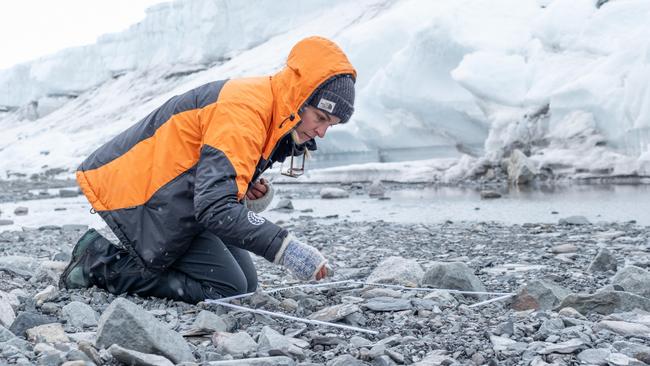‘Alien’ Antarctica adventure: biologist returns from mission to remote icy range
For biologist Laura Phillips, the Morozumi Range in Antarctica’s east was an ‘alien’, beautiful region to study.

For biologist Laura Phillips, the Morozumi Range in Antarctica’s east was an “alien”, beautiful region to study.
With the help of an Australian Research Council grant for Antarctic conservation, she was able to document the isolated mountain range in one of the most thorough surveying groups to come out of Australia’s higher education sector.
Dr Phillips was part of a multidisciplinary expedition team that spent months in Antarctica studying biodiversity, ice history and the changing ecosystem of one of the most isolated places on Earth.
The Monash University research assistant travelled as a part of the Securing Antarctica’s Environmental Future group’s Morozumi Range Biodiversity Project.
The project hinged on a variety of sample tests, including molecular analysis of plants and insects – Dr Phillips specialised in small bugs known as springtails – while geological specimens were carbon dated to study the changing structure of the continent.
“It’s a long-term program, basically looking at how things are working, the climate, the environment, the biodiversity, and then connecting that to policy and how we can protect the region,” Dr Phillips said.
“My background is in biology, and I was working closely with my colleague, Richard Jones, who is a glacial geomorphologist.
“That was really cool, because we both got to learn a lot about each other’s research and how it works together.
“That can give us a better picture of what’s going on in Antarctica, rather than just working in our individual disciplines.
“It’s quite special knowing that you’re going to this place, which is quite isolated, very harsh.
“The weather is pretty crazy down there, and some of the landscape just looks like nothing you see anywhere else.
“We’re really only at the tip of the iceberg in understanding what species are there and how they’re surviving in this wild.”
A separate Monash team travelled to the Humboldt Mountains, a collection of peaks rising from Dronning Maud Land, found further north.
There, SAEF chief investigator Andrew Mackintosh investigated how, during a period of shrinking ice mass through the poles, Dronning Maud was somehow still gaining mass.
“The Antarctic ice sheet is responding to climate change in a complex manner – it is losing significant ice overall, but some parts have been gaining mass, and we need to know why,” Professor Mackintosh said.
“Dronning Maud Land is one region gaining mass.
“Our field locations were spectacular and provided near-perfect conditions – a ridge covered with glacially transported cobbles extending perpendicular to and above the modern ice sheet, rising several hundred vertical metres.
“Sampling on this ridge was possible from the modern ice margin all the way to the summit of a local mountain.
“This site will allow us to understand when the modern ice sheet last retreated and when it stabilised in its current position in unprecedented detail.”






